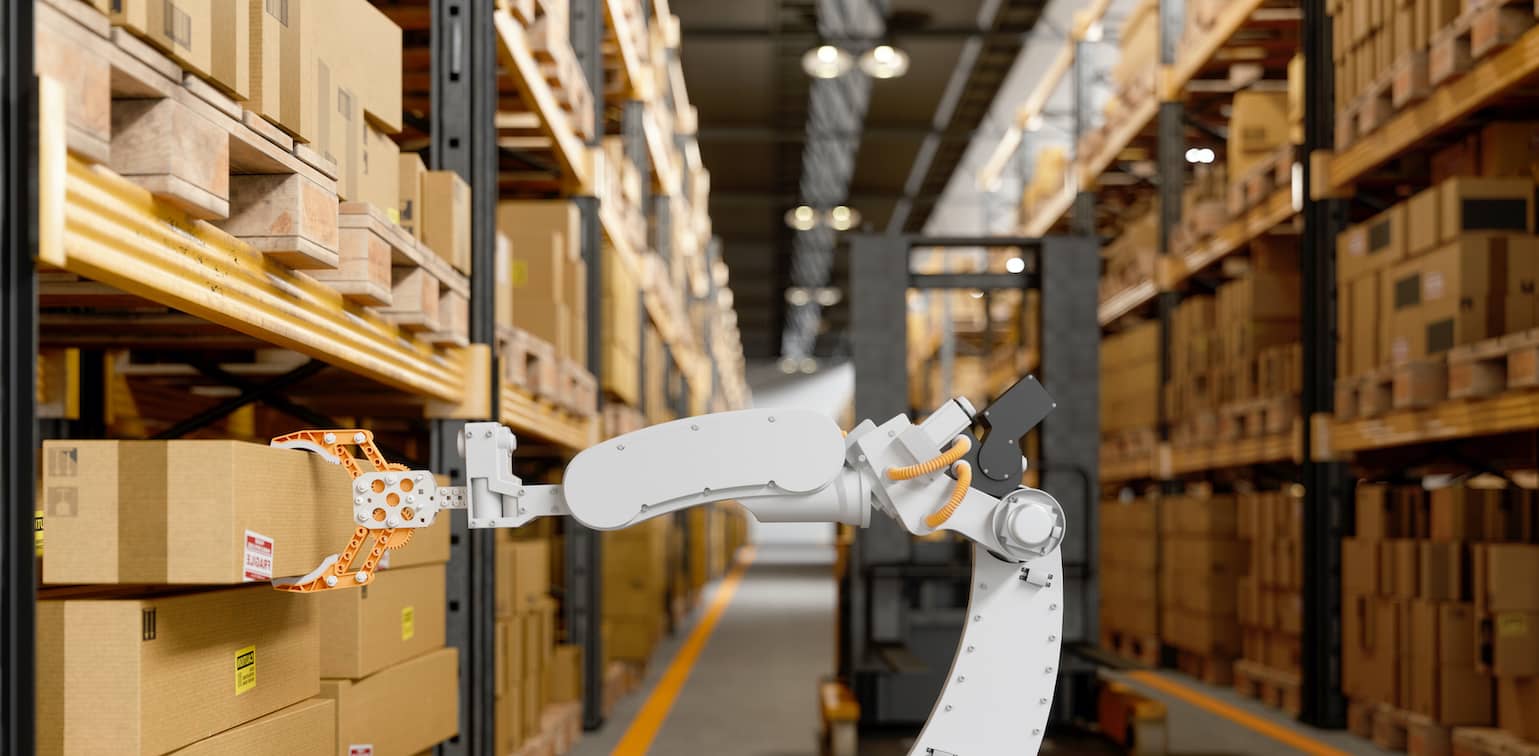
Are you new to EDI? Then you've come to the right place! Below is a step-by-step guide to help you learn EDI today.
Do you have an EDI mandate? This is the case for many small manufacturers, with just one or two retail partners. Many large retailers require their suppliers to exchange order data via an EDI connection. This commonly includes mandates for EDI orders, invoices, and Advance Shipping Notices. Whether you have an EDI mandate to comply with, or are simply curious, we have everything you need to learn EDI quickly and easily.
New to EDI? Try it for FREE!
Gain hands-on experience today! Learn how to exchange EDI orders and invoices with the free Transalis eDI Instant™ demo.

In this article, we cover everything you need to know about EDI…
EDI meaning: a simple explanation
Many people who want to learn EDI first need an EDI Definition.
So, what does EDI stand for? The EDI acronym stands for ‘Electronic Data Interchange’. EDI enables the automated exchange of digitised business documents between trading parties. Thus removing manual processing in the supply chain.
EDI supports the sharing of all documentation relating to a B2B supply chain transaction. From orders and invoices to customs declarations. It replaces the physical and non-formatted exchange of information by post, fax and email. EDI works by reformatting information in line with internationally recognised standards that can be read by different computers and systems.

EDI transactions and standards
There are different EDI standards depending on region, industry and use, so it’s important that your EDI uses the same protocols as your trading network.
They enable different systems to speak the same language as each other, so that the exchange of data is automated. EDI standards are based on recognised requirements for the format and make-up of EDI documents including the order of information. Four principles govern the use of letters and symbols used in EDI documents, they are: Syntax, Codes, Message designs and Identification values.
What is an EDI number?
An EDI number is more commonly known as a Global Location Number (GLN).
This is a unique number that is assigned to a specific location. The GLN enables the location to be uniquely identified worldwide. GLNs can be used to identify any legal, physical and functional location. By definition, GLNs are reference keys to computer files, where information about the company or location can be found. Therefore, GLNs replace the names and addresses of locations, making them particularly useful when automating processes.
Key benefits of EDI numbers include:
GLNs provide a single method of identifying locations across the entire supply chain, which ensures consistency and clarity for all trading partners.
By using GLNs, unnecessary costs and associated errors are omitted. This is because they allow computers to route information to the correct destination with no manual involvement.
EDI and AI: how to enhance your EDI solution
Many EDI solutions can struggle to recognise and correct typos, or other message ambiguities.
AI can support EDI in this scenario by acting as a functional layer. This facilitates timely processing whilst standardising data.
Innovative SaaS providers (Software as a Service providers) help organisations leverage EDI and AI. Narrow AI technology supports EDI solutions by ‘teaching’ the system what needs to be fixed in the data. This approach also enables the same errors to be auto-corrected if they happen again.

The main advantages of EDI Software as a Service
EDI SaaS is a combination of two acronyms used to describe supply chain technology services.
Again, as mentioned above, EDI (Electronic Data Interchange) is defined as the automated exchange of order message data between trading partners, in a standardised digital format. Whereas, Saas (Software as a Service) is categorised as the use of cloud based applications that are accessed over the internet. Therefore, SaaS EDI describes the cloud-based application which provides the automated exchange of standardised business data/messages.
It is a better alternative to legacy on-premise EDI systems. SaaS EDI solutions are typically offered as managed services. This means that SaaS EDI providers do all the legwork on behalf of the organisation using the solution. Benefits of EDI SaaS solutions include: far more accessibility, lower up-front costs, greater flexibility as business needs and markets change, and more. At Transalis, we have developed scalable EDI SaaS solutions, which are hosted securely in the cloud.
Top EDI benefits for businesses
Every business has a unique set of challenges that cloud-based EDI software can solve.
Therefore EDI benefits for different organisations depends on their unique circumstances and requirements. Here are the top advantages of EDI to expect summarised below:
Increased business efficiency: Digitisation of documents optimises the frictionless flow of data, making trading with your supply chain partners far more efficient.
Decreased costs: Automating manual tasks, reducing errors, and improving visibility across your internal and external trading processes, all mean you can save money.
Reduced manual processes: You can turn tasks that have always traditionally been manually intensive straight into automated processes.
Less room for errors: By digitising and automating manual process you immediate take-out the element of human error from the mix, speeding up the order, delivery and payment cycle.
Complete visibility: Electronic data can flow across all your supply chain systems to ensure your management team has real-time visibility of your entire trading operations.
Better decision-making: Ensuring all your internal systems are populated with up-to-date and accurate information, will help you be more informed and make better commercial decisions.
Building frictionless business relationships: Supply chain challenges are dramatically reduced, offering you the prospect of fewer delays and frustrations, enabling you to build better business.
How much does EDI cost?
In short, there is no single answer.
Providers operate different EDI pricing models. You will want to be reassured that your EDI choice is a cost-effective and frictionless method of exchanging business documents. Ask your provider about the pricing model and support they offer.
Ideally, you want to find a transparently-priced solution that is tailored to your needs and can generate a return on investment. In addition, be sure that the price reflects exactly the level of help you need and comes with no hidden extras or upfront fee. And you will also certainly want to avoid a Value Added Network (VAN) charging model.

If you only need a single connection with two message types, eDI Instant is the fastest way to start using EDI. As with all our solutions, there’s no hidden fees and absolutely no VAN charges. At just £495 per annum you can buy instantly online and be up and running in as little as 24 hours.
Electronic Data Interchange: EDI questions and answers
To close this Learn EDI guide, here’s the most frequently asked questions summarised below:
What is Electronic Data Interchange? First of all, EDI stands for Electronic data interchange. EDI is the rapid digitised exchange of data between trading partners.
How to set up Electronic Data Interchange? Your provider should be able to install your EDI software and make it easy to use. So you don’t have to worry about going ‘under the bonnet’ at all.
Do I need to manage and upgrade the EDI solution? No, your EDI provider should take care of all that so you don’t have to learn the technical ins and outs.
Is Electronic Data Interchange secure? Yes. Electronic Data Interchange includes security and control elements, such as user identification numbers and passwords.
What are the 4 key benefits of EDI? The top EDI benefits are the following: Reduces costs by up to 80%, improves security, creates a compliant supply network, and produces efficient audits.
How much does EDI cost? Finally, EDI solutions don’t have to be expensive. You should find a transparently priced solution that is tailored to your needs, and comes with no hidden extras or upfront fees. We provide a complete solution without any additional VAN charges.
eDI Software
Find out more about our free demo for eDI Instant and how it can help your business get started with EDI. You can also explore our other EDI products on our EDI software page or give us a call on 0845 123 3746 (calling from UK) or +44 1978 369 343 (international callers), or via email sales@transalis.com to discuss your requirements.











